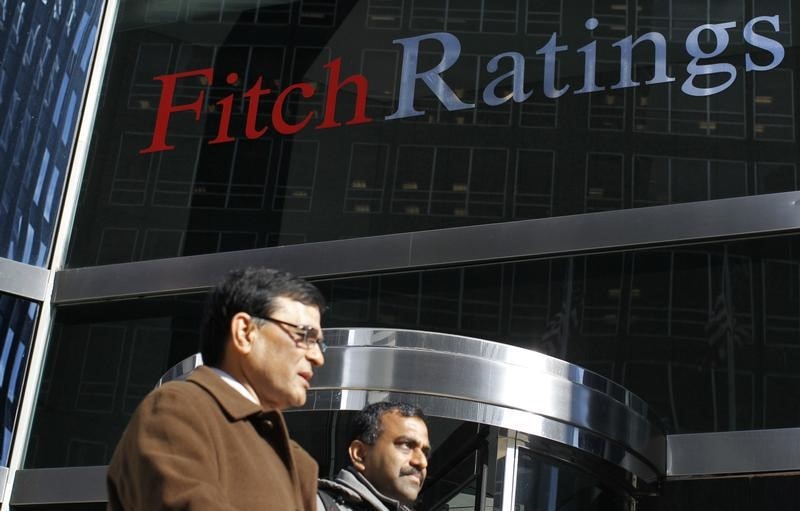(The following statement was released by the rating agency)
LONDON, February 02 (Fitch) The overhaul of the internal models approach - used
by most banks with large trading books to calculate market risk capital
requirements - will be costly, says Fitch Ratings. The Basel Committee on
Banking Supervision's revised market risk framework, published in January and
effective from 2019, fundamentally changes the approach.
The model revisions should improve risk assessment capabilities, lead to higher
capital charges for hard-to-model trading positions and make it easier to
compare banks' results. But the model approval process and governance are being
thoroughly revised and implementing the changes will require considerable
investment in technology and risk management.
Banks will need to obtain approval for internal models desk by desk, rather than
bank-wide. This will make it easier for supervisors to decline approval for a
particular trading desk, if, for example, the desk is unable to satisfy model
validation criteria due to back-testing failures or an inability to properly
attribute profits and losses across products. But we think costs associated with
building and running the more sophisticated models will be high.
Instead of running a single bank-wide model for a range of stressed and
unstressed risk factors, multiple new models will need to be built, validated
and run daily. This will multiply the number of model reviews and operational
runs and add to subsequent data analysis and reporting procedures. Additional
risk personnel will be required for review, oversight, and reporting purposes.
The amount of regulatory capital models-based banks will need to cover potential
market risks following the revisions is uncertain. The Basel Committee's latest
studies show that, for a sample of 12 internationally active banks with large
trading books, all of which provided high-quality data, market risk capital
charges under the revised approach were 28% higher. But for a broader sample of
44 banks using internal models, the median market risk capital requirements fell
by 3% under the revised models.
We think the result for the 12 banks could reflect greater concentrations of
less liquid credit positions that require more capital, or larger trading
positions lacking observable transaction prices, which are subject to a stressed
capital add-on. Banks facing higher charges under the regime may re-assess
whether certain activities remain profitable.
The new internal models approach replaces value at risk (VaR) with an expected
shortfall (ES) measure. VaR does not capture the tail risk of loss distribution,
which can arise during significant market stress. The use of ES models for
regulatory capital is positive for bank creditors because they could lead to
better capitalisation of tail-risk loss events and might motivate risk managers
to limit trading portfolios that could lead to outsized losses.
When calculating ES measures, banks will have to use variable market liquidity
horizons - to a maximum of 120 days for complex credit products, against the
current fixed 10-day period. We think model inputs will be more realistic, by
acknowledging that some instruments take longer to sell or hedge without
affecting prices. ES will also constrain recognition of diversification and
hedging benefits, extensively used in VaR models to reduce capital charges. We
think this will make model outputs more prudent and force banks to better
capitalise potential trading losses.
Structural flaws in the way banks calculated capital charges for market risk
were exposed during severe market stresses in 2008-2009. The Basel Committee
subsequently undertook a fundamental review of the trading book. The original
proposals were watered down, but we think the final revised minimum capital
standards for model-driven market risk are positive for creditors because
improved model standards and more prudent methods employed to capture risk
should mean trading risks are more accurately capitalised.
Contact:
Monsur Hussain
Senior Director, Financial Institutions
+44 203 530 1793
Fitch Ratings Limited
30 North Colonnade
London E14 5GN
Janine Dow
Senior Director, Fitch Wire
+44 20 3530 1464
Media Relations: Elaine Bailey, London, Tel: +44 203 530 1153, Email:
elaine.bailey@fitchratings.com.
The above article originally appeared as a post on the Fitch Wire credit market
commentary page. The original article can be accessed at www.fitchratings.com.
All opinions expressed are those of Fitch Ratings.
ALL FITCH CREDIT RATINGS ARE SUBJECT TO CERTAIN LIMITATIONS AND DISCLAIMERS.
PLEASE READ THESE LIMITATIONS AND DISCLAIMERS BY FOLLOWING THIS LINK:
HTTP://FITCHRATINGS.COM/UNDERSTANDINGCREDITRATINGS. IN ADDITION, RATING
DEFINITIONS AND THE TERMS OF USE OF SUCH RATINGS ARE AVAILABLE ON THE AGENCY'S
PUBLIC WEBSITE 'WWW.FITCHRATINGS.COM'. PUBLISHED RATINGS, CRITERIA AND
METHODOLOGIES ARE AVAILABLE FROM THIS SITE AT ALL TIMES. FITCH'S CODE OF
CONDUCT, CONFIDENTIALITY, CONFLICTS OF INTEREST, AFFILIATE FIREWALL, COMPLIANCE
AND OTHER RELEVANT POLICIES AND PROCEDURES ARE ALSO AVAILABLE FROM THE 'CODE OF
CONDUCT' SECTION OF THIS SITE. FITCH MAY HAVE PROVIDED ANOTHER PERMISSIBLE
SERVICE TO THE RATED ENTITY OR ITS RELATED THIRD PARTIES. DETAILS OF THIS
SERVICE FOR RATINGS FOR WHICH THE LEAD ANALYST IS BASED IN AN EU-REGISTERED
ENTITY CAN BE FOUND ON THE ENTITY SUMMARY PAGE FOR THIS ISSUER ON THE FITCH
WEBSITE.
